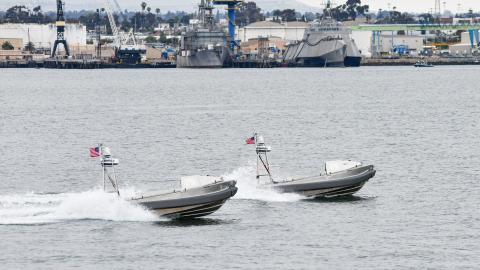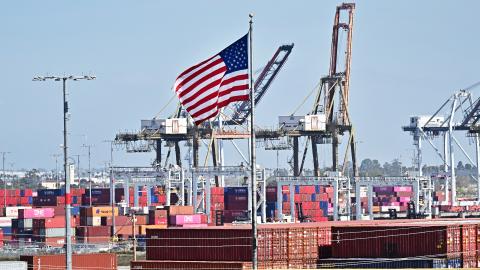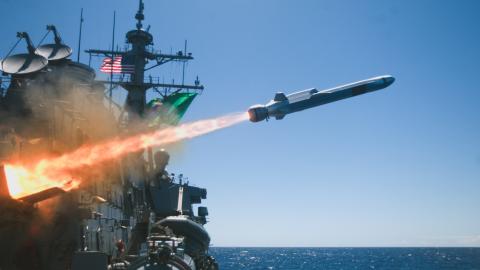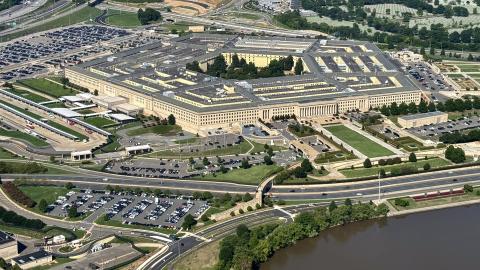In the 1990s, following the Soviet Union’s collapse, few in Washington were thinking about China as a potential future threat. During this “unipolar moment,” the conventional wisdom held that China would become a responsible stakeholder of the global community once it had become a fully integrated member. Inside the Pentagon, however, a group of analysts charged with assessing the strategic environment saw things differently. Focusing increasing attention on the Chinese leadership, they concluded that China was intent on creating the capabilities needed to overturn the U.S.-led international order. Their findings proved prescient, anticipating by several decades the return of active great-power competition and China’s growing military challenge to the United States.
These insights came from the Office of Net Assessment, a small arm of the Department of Defense that has, through its independent analyses, for decades played a vital role in informing senior Pentagon leaders’ strategic planning and policy priorities. Although it comprises only a dozen or so staff and commands a research budget of roughly $20 million—“budget dust” in Pentagon-speak—ONA has again and again provided crucial and often contrarian analysis that has reshaped U.S. strategic thinking.
Yet on March 13, U.S. Defense Secretary Pete Hegseth ordered the “disestablishment” of ONA and directed Pentagon managers to reassign the office’s employees elsewhere. He also canceled all existing ONA research contracts. In announcing the closure, Hegseth also requested that the deputy secretary of defense devise a plan for “rebuilding” the office in a different form, to be structured “consistent with” the secretary’s priorities. But the message seems clear: ONA will cease to exist as an autonomous center for strategic thinking that has so often contributed crucial and sometimes paradigm-shifting insights by challenging conventional wisdom. As a review of the office’s extraordinary history makes plain, this decision needs to be urgently revisited.
The Marshall Project
ONA was established in 1973, the result of an agreement between Secretary of State Henry Kissinger and Secretary of Defense James Schlesinger. The office was charged with providing the secretary of defense with independent assessments of the military competition between the United States and the Soviet Union, to include the current status as well as trends in the competition, areas of comparative U.S. advantage and disadvantage, and sources of prospective problems and opportunities. “Net assessment,” a form of strategic planning unique to the office, was formulated and refined by its founding director, Andrew Marshall, known by defense cognoscenti outside the Pentagon as “the most famous man you never heard of,” and inside it simply as “Yoda.” Marshall would lead the office for over four decades, until his retirement in 2015. He directed his staff to be “relentlessly skeptical” of the current conventional wisdom. “We’re here to inform, not to please,” was his way of saying that ONA should always speak truth to power. To prevent its findings from being blocked or watered down by the defense department’s bureaucracy, ONA was instructed to forward them directly to the Pentagon’s senior leaders.
At the time ONA was created, U.S. defense policymakers confronted a key strategic issue in their open-ended struggle with the Soviet Union: Was time on America’s side, or the Kremlin’s? The intelligence community had concluded that the Russians, with an economy roughly half the size of the United States’ economy, was somehow fielding, maintaining, and modernizing a much larger military, even though it was spending the same percentage of its GDP, roughly six percent, as the United States. Put simply, if the CIA findings were correct, the long-term prognosis for the United States was bleak.
Given the issue’s strategic significance, ONA conducted its own assessment. Contrary to assumptions in Washington at the time, it found the Soviet buildup was placing a far greater burden on the Soviet economy than the CIA believed. As Marshall put it, rather than being “miracle makers,” Soviet leaders were devoting a far greater share of their country’s wealth to the military—a level of effort they would find difficult, if not impossible, to sustain over the long term. In other words, time was on the side of the United States, and so there was no need to negotiate with Moscow from a position of weakness. Thanks to ONA’s assessment, the CIA revised its estimates, reporting that the Soviet military burden was consuming between 16 and 18 percent of the country’s GDP. (In fact, Soviet economic data that emerged after the end of the Cold War showed that the level was even higher.)
Within a few years, ONA’s at times counterintuitive findings—and careful consideration of how enemies would react to specific U.S. military programs—would have far-reaching influence on defense strategy. Take the B-1 bomber. In 1977, President Jimmy Carter canceled the program, in part owing to the logic that, thanks to its land- and sea-based nuclear-tipped ballistic missiles, the United States did not also need a strategic bomber that could penetrate Soviet air defenses. But an ONA analysis gave senior Pentagon leaders a different perspective: it pointed out that the Soviets, in exercising totalitarian rule over a country with a border exceeding 37,000 miles, were obsessed with the threat of an air attack and had established a separate military service, called PVO Strany, to field the world’s most extensive air defense network. In fact, the Soviets were often spending more on air defenses than on their nuclear forces.
By this logic, there was good reason for the United States to continue fielding the B-1: the strategic bomber program would reinforce Moscow’s predisposition to invest heavily in its air defenses at a cost that far exceeded what the United States spent procuring and maintaining a fleet of B-1s. In 1981, based in part on the ONA assessment, the Reagan administration revived the program. Years later, U.S. analysts calculated that the Soviets had spent around ten times as much on air defense as Washington had invested in bombers, and they still never achieved the ability to defeat a U.S. air attack. The Soviet air defense program was, in their words, a “hideously expensive failure.”
Over the course of its history, ONA has been equally adept at identifying disruptive changes in warfare that could be exploited to the United States’ advantage. A year before the Berlin Wall fell, the office brought together a group known as the Commission on Integrated Long-Term Strategy. Among its members were former National Security Adviser Zbigniew Brzezinski, former Supreme Allied Commander of NATO Andrew Goodpaster, the Harvard political scientist Samuel Huntington, Undersecretary of Defense for Policy Fred Iklé, former National Security Adviser and Secretary of State Henry Kissinger, and the nuclear strategist Albert Wohlstetter—a group reflecting ONA’s ability to attract the nation’s very best strategic minds. The commission found that the emergence of advanced sensors, precision-strike weapons, and rapidly improving computational power would enable a new, and far more effective, way of conducting military operations. The Soviets called this set of capabilities a “reconnaissance-strike complex,” while the Americans would come to label it “precision-strike.” The assessment anticipated within three years the U.S. military’s introduction of a “revolution in military affairs” in Operation Desert Storm. In the decades since, precision-strike operations have become a defining characteristic of almost all U.S. military campaigns. Although the United States at the time enjoyed a near monopoly in this form of warfare, ONA urged senior defense officials to consider how the military would need to adapt once its rivals acquired similar capabilities, anticipating by several decades the People’s Liberation Army’s success in doing so.
China’s long game
Perhaps nowhere has ONA’s analysis been more important than in raising awareness of the threat posed by China. A full four years before the Soviet Union’s collapse, ONA concluded that Moscow was in fundamental decline and that the United States needed to start thinking about Beijing. Senior defense leaders, the office wrote, would need to reorient the U.S. military’s principal focus toward the Pacific. Heeding its own advice, during the two decades that followed, ONA focused increased attention on China and sponsored a series of planning exercises revealing that the U.S. military had not developed a concept for defending U.S. allies in the event of Chinese aggression.
Paradoxically, despite this early head start, it would take years for the U.S. military to absorb these insights. Although ONA’s findings spurred the U.S. Air Force and U.S. Navy in 2010 to establish an Air-Sea Battle office to address ways of offsetting China’s rapidly expanding military capabilities in the western Pacific, the effort was obstructed by interservice parochialism. Nevertheless, ONA pressed on, undertaking new assessments of military developments in the Indo-Pacific region. One result was “Archipelagic Defense,” a new concept for deterring Chinese aggression against U.S. allies and security partners situated along the so-called first island chain, which stretches from Japan through Taiwan and the Philippines and down to Indonesia and Singapore. The concept described, in unprecedented detail and across a range of contingencies, how U.S. and allied forces could be adapted to enhance deterrence and defense. Not only has Archipelagic Defense significantly influenced Japan’s defense planning, many of its elements now also feature in the U.S. military’s plans and programs aimed at preserving a favorable military balance in the western Pacific.
In 2016, ONA also assessed the challenges that the U.S. military would confront if a conflict with another major power, such as China or Russia, became protracted. When originally informed of the project, Defense Secretary Ashton Carter expressed surprise that the office would devote its resources to exploring what at the time seemed an odd topic—especially given the Obama administration’s desire to avoid describing China or Russia as a strategic competitor. Yet despite his reservations, Carter, who had benefited from ONA’s work going back to his time at the Defense Department during the Clinton administration, gave the go-ahead.
Among the findings emerging from the protracted war study, several stand out. One noted the need for the United States to begin establishing “deep magazines”—large stockpiles of munitions. Another called for an initiative to field strong NATO anti-access/area-denial defenses in eastern Europe, both to deter Russian aggression and to sustain a successful defense of the region should deterrence fail. The office also pointed to major problems with the United States’ “arsenal of democracy,” including a shortage of strategic materials such as rare-earth metals, shortfalls in skilled labor, and an inability to rapidly surge production of critical weapon systems and munitions needed to resupply U.S. and allied forces as war progressed. Had Pentagon officials paid heed to these warnings when they were presented, the United States would have been far better prepared for Russia’s full-scale invasion of Ukraine six years later, in 2022.
Before it’s too late
Given ONA’s track record, it should come as no surprise that for more than 50 years its assessments have been highly valued by senior defense officials from both political parties. Indeed, since most of the office’s assessments are highly classified, the examples cited above are merely a glimpse of the work that has provided the Pentagon’s leadership with a phenomenal return on its exceedingly modest investment.
Nevertheless, since the office has often challenged the mainline views and priorities of the Pentagon’s civilian and military bureaucracy, there have long been those within the department who think their interests would be better served without it. This is not unique to the current administration. In past decades, as is the case with Hegseth, resistance to ONA has usually come closest to succeeding early in a defense secretary’s tenure, before the secretary has been able to develop an understanding of the office’s value. In 1997, for example, newly confirmed Defense Secretary William Cohen contemplated exiling ONA from the Pentagon and relegating it to a less prominent place at the National War College. Sixteen years later, Defense Secretary Chuck Hagel, shortly after his confirmation, explored shutting down ONA entirely. In both instances, however, former officials and strategists forcefully made the case for the office’s crucial value. In the latter case, six former defense secretaries from both political parties, each of whom had years of experience with the office, wrote to “strongly urge” Hagel “to retain this small but unique office and its function.” They underscored that ONA had “repeatedly paid enormous dividends during some of the most challenging periods in our recent history.”
Hegseth has declared that his intent, after a 30-day review, is to rebuild ONA “consistent with my priorities.” Yet according to a source familiar with the office’s activities, ONA has already been at work on seven of Hegseth’s 17 top priorities. The idea of creating a new ONA, as Hegseth suggests, would undercut the very qualities that have made the office such a powerhouse. Combined with its independence and autonomy within the Pentagon, ONA’s secret recipe has always been its distinctive net assessment methodology that was first developed in the late 1960s and that has been refined and enhanced for over half a century. Once that recipe and tradition are lost, they will not be easily reestablished.
The Trump administration has come to office at a time when national security threats are arguably greater than at any time since the 1930s, and as the country’s fiscal posture is rapidly eroding. Meanwhile, the character of war, stimulated by relentlessly advancing technologies, is evolving more rapidly than ever. In this environment, sound assessments of emerging threats and new ideas to counter them will be especially vital. Hegseth might benefit from his predecessors’ experience and take the time to ensure he doesn’t break what isn’t broken. His 30-day review of ONA’s value offers an opportunity to avoid a mistake that would prove difficult, if not impossible, to fix.




















